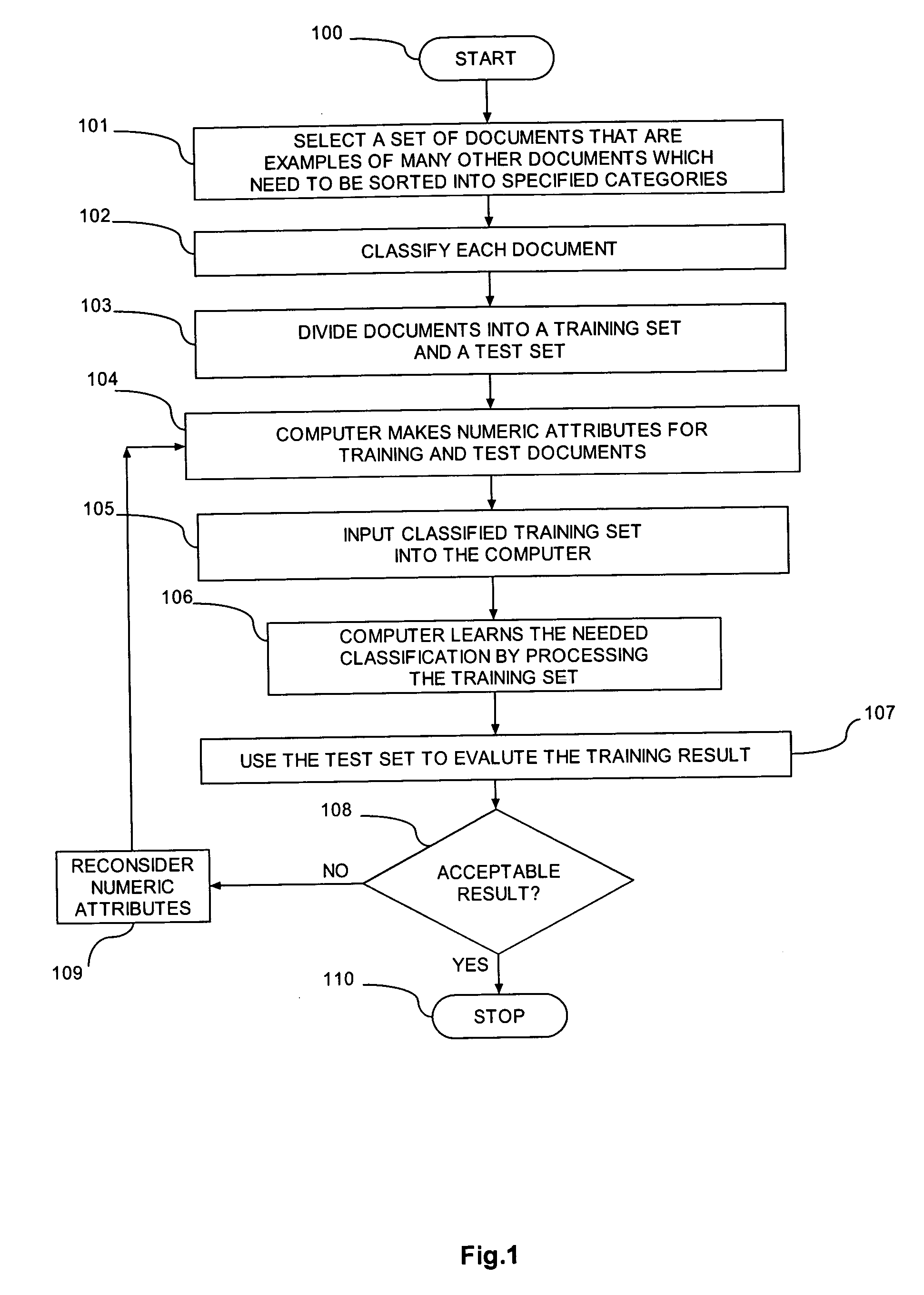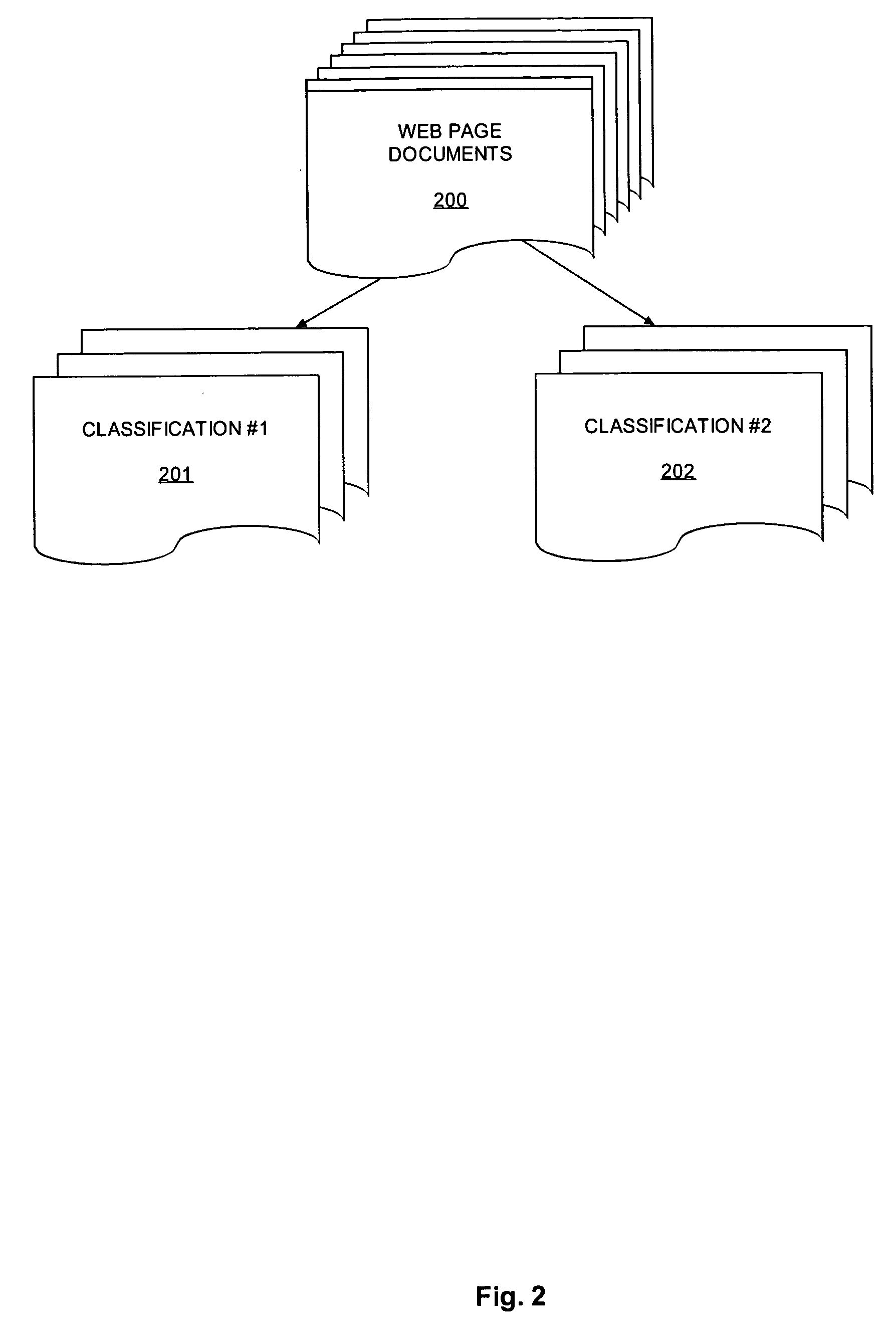Method and apparatus for efficient training of support vector machines
a technology of support vector machine and training method, applied in the field of classification data, can solve the problems of much greater speed for many large text problems, and achieve the effect of greater speed and learning speed of a support vector machine classifier
- Summary
- Abstract
- Description
- Claims
- Application Information
AI Technical Summary
Benefits of technology
Problems solved by technology
Method used
Image
Examples
Embodiment Construction
[0015] The present invention will now be described in detail with reference to a few preferred embodiments thereof as illustrated in the accompanying drawings. In the following description, numerous specific details are set forth in order to provide a thorough understanding of the present invention. It will be apparent to one skilled in the art, that the present invention may be practiced without some or all of these specific details. In other instances, well-known process steps have not been described in detail in order to not unnecessarily obscure the present invention. The features and advantages of the present invention may be better understood with reference to the discussion that follows and to the drawings. FIG. 1 provides an overview of the process flow of the embodiment.
[0016]FIG. 1 is logic flow diagram showing a support vector machine learning process. This embodiment makes it possible to design an SVM (Support Vector Machine) classifier for many text classification prob...
PUM
 Login to View More
Login to View More Abstract
Description
Claims
Application Information
 Login to View More
Login to View More - R&D
- Intellectual Property
- Life Sciences
- Materials
- Tech Scout
- Unparalleled Data Quality
- Higher Quality Content
- 60% Fewer Hallucinations
Browse by: Latest US Patents, China's latest patents, Technical Efficacy Thesaurus, Application Domain, Technology Topic, Popular Technical Reports.
© 2025 PatSnap. All rights reserved.Legal|Privacy policy|Modern Slavery Act Transparency Statement|Sitemap|About US| Contact US: help@patsnap.com



